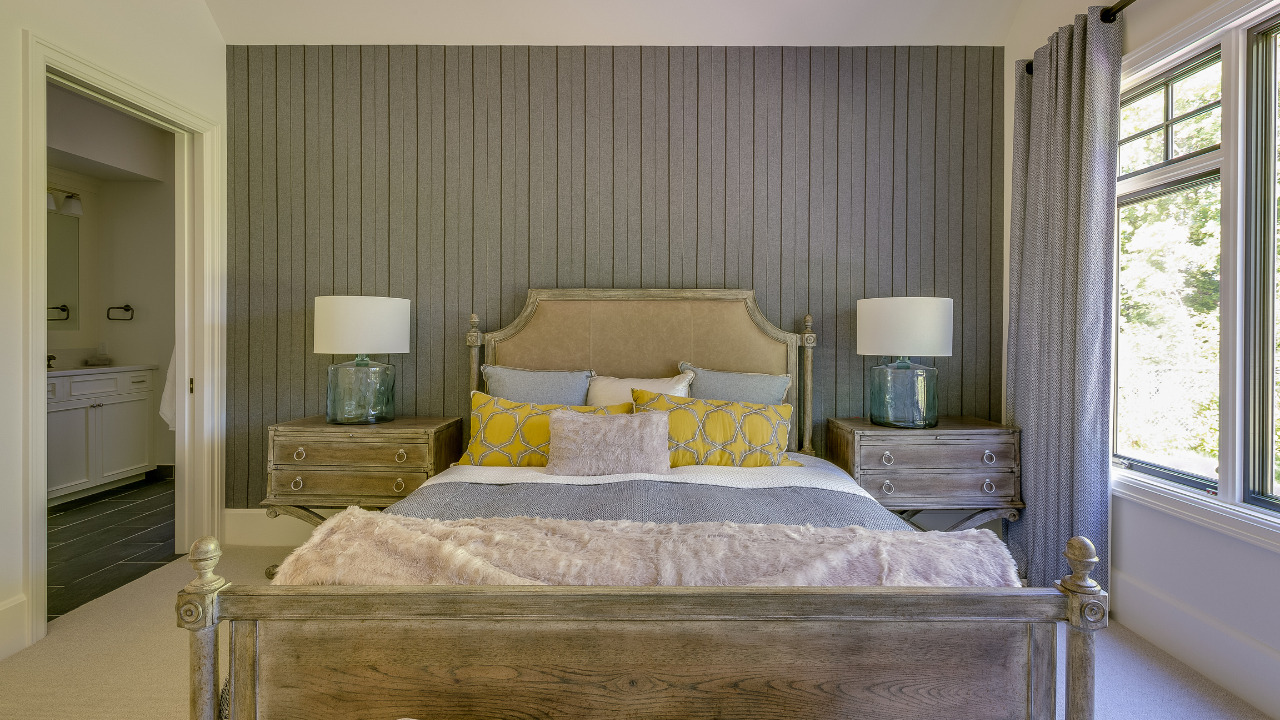Are you looking for a new way to decorate your bedroom? This article will provide some ideas for doing so in the Japandi style. The Japandi style is characterized by its bright and cheery colors, perfect for any bedroom. These Japandi bedroom designs will assist you in creating a restful sleeping environment with soft lighting, peaceful hues, and fashionable Japandi furniture options.
We’ll also discuss some of the most important elements to consider when decorating this style, such as color scheme, furniture, and lighting. If you feel attracted to learning more about Interior Design styles, consider taking some free online courses, such as the “Interior Design Fundamentals” by Home Design Institute.
You will not only expand your knowledge in Interior design but also have the chance to obtain a Professional Certificate for your designer website and future career development.
Table of Contents
What Are Japandi Bedroom Decor Ideas?
For designing a calming and restful area for sleeping and relaxing, japandi bedroom ideas are the ideal option. One of the largest trends in interior design today is the Japandi style, which combines the coziness and warmth of Scandinavian with the clarity and serenity of Japanese minimalism.
The Japandi style is a hybrid interior design trend that combines the best components of both to produce an eclectic, styled appearance. It is a fusion of beautiful Japanese minimalism with rustic Scandinavian simplicity. The emphasis is on establishing a serene, unified style and a laid-back, cozy setting, which is why it is rooted in natural materials, clean lines, and top-notch craftsmanship.
When designing a space in the Japandi style, bedrooms are the ideal location.
Japandi Bedroom Decor Ideas
Consider the Bedroom Color Scheme.
Using a more traditional color scheme, use colors that evoke purity, like lavender and white. If this is not what you want for your bedroom, try dark blues or grays, which can also be calming. In Japan, the colors used in their bedrooms tend to be earthy tones, such as browns and whites.
Though if these colors don’t work with your inner decorating style, feel free to experiment by using other neutral shades like navy blue or pink.
Some people also prefer contrasting wall paint designs against each other rather than choosing one single tone for the walls – this can create an interesting effect without necessarily being too “busy.” Experimenting would probably be best since there isn’t just one way.
Choose furniture that matches the style and size of your space
Traditional Japanese furniture is made of a light, durable wood called cedar. The traditional color palette includes mostly natural colors such as blue, green, and brown, with touches of red or gold for detail.
In Japandi decorating, you will find that the space has to be in harmony with itself by using simple lines and shapes, also found in nature.
You should always use dark colors like black or charcoal grey on the walls, while lighter tones can be used on your upholstery fabrics and bedroom accessories. How one decorates their home says a lot about themselves, so when choosing what Japanese items to buy, keep this guiding principle in mind: simplicity!
Simplicity leads to purity, whereas clutter breeds chaos.
Add personal touches or artwork
When designing a bedroom in Japandi style, you should consider adding personal touches. This can include family photos or artwork created by children. Keeping these items out in the open will create an inviting space for recreation and time with loved ones.
If you want a more elaborate design, consider adding cushions and lamps. These will help create an inviting atmosphere perfect for spending time with friends or reading in bed at night before sleeping.
Add some plants for freshness.
Plants might be the answer if you’re looking for a way to infuse life into an otherwise empty room. They can provide greenery and make it look more like home when decorating in Japandi style.
There is no right or wrong number of plants so long as they are combined with other elements-some, people prefer just one plant, while others opt for three or four.
An additional idea would be to use lower-hanging plants such as ivy that will still offer privacy without blocking the sunlight from streaming through your windows during daylight hours.
If you want something taller, try cascading vases filled with flowers over two different levels on either side of your bed, giving off a romantic effect at night time.
Find The Base Color For the overall Bedroom Look
As advised, choosing a base color for the overall design is the first step in decorating your Japandi bedroom. Scandi’s design emphasizes neutral colors like white, cream, beige, and grey. The colors light brown, taupe, green, and other warmer, somewhat darker hues are typical in the Japanese style.
For intrigue and a dash of drama, it would be preferable to start with a brighter color as your basis and add pops of contrasting darker colors. Plants and foliage are a great way to bring color to a room. Certain plants, like valerian and lavender, can even improve your sleep.
Add A Stylized Pattern

Although keeping things simple is important, rooms don’t have to be completely design-free. It’s a fantastic idea to introduce a stylized pattern to provide an accent color that will add visual intrigue. The focal element of your scheme should be a single statement motif. Feature wallpaper or mural, plain curtain panels, bed linen, or wall art are all options.
After that, keep the remainder of the color palette understated and subdued using complementary soft hues and tonal textures.
Finish with accents that are either simple or bold
The accent color can be any shade you want, but it needs to work well with the bedding and other colors in the room. Some people prefer a big-color style, while others like something more subdued.
Either way is fine! You might also want to consider what type of look you’re going for, clean and simple or eclectic. This will help determine how many items you’ll need and their styles (e.g., minimalist vs. artsy).
A bedroom is a special place to rest and recharge our batteries. It should be decorated according to your personality, taste and needs.
The most important thing about your bedroom decoration is that you enjoy it !!! If you are not 100% happy with what you see when looking at it, then keep changing things until you get there! Your personal space does make all the difference, so don’t neglect its importance.
Frequently Asked Questions (FAQs)
What is Japandi’s bedroom decor?
A fusion of Japanese and Scandinavian design inspirations is called “Japandi.” Together, they evoke ideas of a minimalist, rustic, aesthetically appealing, but most importantly useful, interior design.
Are Zen and Japandi bedroom decor ideas different?
Zen is a term for meditation frequently associated with minimalism and coziness in Japanese culture. Less is more is the guiding principle of the Japandi style, which emphasizes natural elements, simple shapes, and lighter colors.
What are the basic features of Japandi bedroom decor?
The sleek, modern lines of Scandinavian design and the elegant, practical, and refined Japanese aesthetic are combined in Japandi. It is simple but warm and emphasizes using natural materials, many textures, and neutral colors.
Conclusion
Hence, we’ve provided some pointers and suggestions for beds, bedroom décor, and colors. But how does it all come together? This post will greatly assist you if you seek visual inspiration. This article serves as a general guide to the essential elements of Japanese-style home decor.
As previously stated, the Japandi style does not require purging your bedrooms of all your stuff, even though it draws inspiration from minimalism. It is more about creating order, selecting specific materials, and utilizing what we already have.













